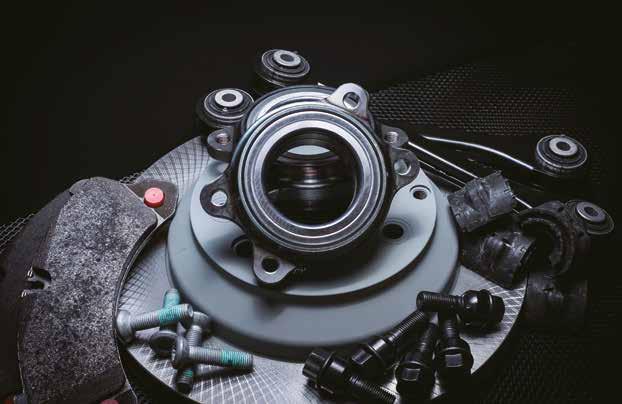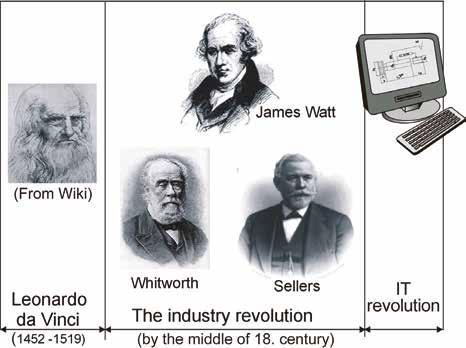
7 minute read
2 Development of Cold Headed Steel
The basic production process of the materials for critical high-strength automotive fasteners is: molten iron pretreatment (KR) → converter steelmaking (BOF) → LF → RH/VD → billet casting → billet opening → grinding → probing → grinding → rolling. The focus of steelmaking process control is impurity, segregation, grain size, composition uniformity and consistency, and oxygen, nitrogen and hydrogen content, etc.; the focus of rolling process control is surface quality (to avoid scratches and cracks), decarburization layer, dimensional accuracy, oxide skin, head and tail trimming amount, microstructure (to avoid Weiss structure), cold upsetting performance, etc. [2]. Critical fasteners also have higher requirements for hydrogen-delayed fracture resistance. Therefore, the development of automotive fasteners benefits from the continuous innovation of cold heading steel technology and keeps pace with the times.
2.1 Cold Headed Steel Wire Rods for Automobiles
As the automotive enterprises’ demand for cold headed steel for products is getting higher and higher, the general technical level for the current national standards of cold headed steel GB/T 6478 and GB/T28906, can no longer meet the demanded quality of cold headed steel for automobiles. Furthermore, high-strength automotive fasteners have higher material requirements and higher costs than ordinary cold headed steel does [3]. Since there is no national or industry standard for this kind of special cold headed steel products in China, many enterprises have formulated their own enterprise standards, and the industry has aimed at improving technology on the basis of GB/T 6478. In 2019 Special Steel Enterprises Association published Group Standard T/SSEA0024-2019.
In 2021, the standard “Cold Headed steel and Hot Rolled Wire Rods for Automobiles" was published. It was undertaken by the Secretariat of Steel Wire Rod and Sub-Technical Committee in 2021, and was drafted by Jiangsu Yonggang Group Co. and has entered the stage of waiting for approval. The formulation of a cold headed wire rod standard for automotive fasteners came at the right time to upgrade the technology for cold headed wire rods. Since cold headed steel wire rods for automobiles have high requirements on composition, purity, cold upsetting and surface quality, they can meet the demand for raw materials for highstrength automotive fasteners in a targeted manner and improve the technical quality level of Chinese fasteners, mainly aiming to improve the technical requirements to meet the use of automotive fastener manufacturing plants and facilitate the use of users and standardization of fasteners.
2.2 Non-annealed Cold Headed Steel for Fasteners
For using medium carbon steel or medium carbon alloy steel to manufacture high strength fasteners of grade 8.8 and above, hot rolled steel should go through "one spheroidizing and one drawing", or "two times of spheroidizing and two times of drawing". The process of the latter in sequence is spheroidized annealing, drawing, spheroidized annealing, drawing and finally cold heading. The purpose of annealing and softening is to obtain the structure and mechanical properties required for subsequent processing (drawing, cold heading, etc.) [4]. The hardness decrease caused by softening can improve the service life of the cold heading die, so spheroidizing has a great influence on the pass rate of cold heading. However, this off-line spheroidized annealing and softening treatment is the most time-consuming and energy-consuming process in fastener manufacturing, with a cycle of about 18-32 hours. In light of this, a lot of research has been carried out in recent years at home and abroad to shorten the time for spheroidized annealing and softening or eliminate the need for annealing, so as to shorten the production cycle, reduce energy consumption and protect the environment, and at the same time improve labor productivity and reduce production cost.
Jiangsu Yongsteel Group has made great efforts in the research and development of non-annealed cold headed steel and has achieved stable sales, with the current annual sales volume of about 130,000 tons. In addition, Jiangsu Yongsteel has successfully taken the lead in establishing the "Non-annealed Cold Headed Steel Wire Rods for Automotive Fasteners" for CSAE, and has recently started to prepare the standard for approval.
For the non-annealed steel series, Jiangyin Xingcheng Special Steel Works has successfully developed 10B30 and SWRCH35K steel wires for fasteners, which can be drawn directly and cold-headed and skip annealing. Zenith Steel Group has been mass-producing non-annealed cold headed steel wire rods for many years, which can be safely applied to all kinds of grades 8 and 10.9 fasteners, covering all kinds of bolts and nuts with large deformation, and the grades include 10B21, 10B33, SWRCH35K, 51B20, SH27, etc. Among them, SCM435 and ML35CrMo have achieved the purpose of reducing the time for spheroidizing and annealing and saving energy.
The fatigue strength of grade 8.8 non-annealed materials 10B33, SWRCH35K, 51B20 and the fatigue strength of the tempered parts are compared, and it is discovered that the former has a stronger fatigue strength. This type of material can be easily applied to long bolts to shorten processing and increase production efficiency. Since the amount of several elements such as C, Mn and Si within nonannealed steels is as low as close to the lower limit, it increases the difficulty of tempering, results in unstable mechanical properties after heat treatment, increases costs, and creates inconsistency between manufacturing technique and product stability. Therefore, it is still necessary to increase investment in research.
Automotive bolts and parts
2.3 Non-quenched and Non-tempered Cold Headed Steel
The new era demands for higher performance of automobiles are getting higher and higher, especially with increased focus on safety, environmental protection and highly efficient energy saving. It is required that the steel itself should save energy, reduce manufacturing cost, and have better comprehensive mechanical performance. Non-quenched and non-tempered steel has the advantage of outstanding performance, high efficiency, energy saving, low cost, and environmental protection. It has been vigorously implemented both at home and abroad and is known as "green steel".
At present, the non-quenched and non-tempered steel for fastener manufacturing is basically cold strengthened, and has three major types of structures: ferrite + pearlite, ferrite + bainite and ferrite + martensite duplexes. The non-quenched nontempered fastener technology in China was started in 1980s and formed 3 grades which are MFT8, MFT9, MFT10 under GB/T3098.22-2009 "Mechanical Properties of Non-quenched and Non-tempered Steel Bolts, Screws, Studs with Fine Grains". MFT8 steel wires are produced by thermomechanical rolling with controlled temperature and cooling. The structure is ferrite and pearlite, the average grain size is grade 12 and the size is about 5μm. In addition to high strength and plasticity, it has excellent impact toughness and low temperature fatigue resistance, making it particularly suitable for the manufacture of grade 8.8 high-strength bolts. When using MFT8 steel wires to manufacture fasteners, the total compression rate during drawing is controlled at 22% to 35%, and the optimal total compression rate is about 30%, so that the pre-treatment annealing, quenching and tempering process can be omitted and the stabilization of the aging process combined with the surface treatment can be added, greatly reducing processing costs [5]. According to statistics, grade 8.8 bolts can reduce electricity consumption of heat treatment by about 270KW/h per ton, which can reduce consumption, save energy and reduce carbon emission, benefiting the country and the people.
In comparison, the development of applying of non-quenched and non-tempered steel to Chinese bolts is slower, but there is also a greater breakthrough. In recent years, the development of V-Nb and V-Nb-B-Ti alloy system grades are gaining attention and tests are being done extensively in related areas. At present, studies on cold strengthened, non-quenched, and non-tempered steels have shown that the addition of trace amounts of niobium can have a positive effect without any obvious disadvantages, but should be applied in the range of 0.020% to 0.035%; microalloying of V-Ti-Nb can significantly reduce the susceptibility to grain coarsening and can increase the amount of ferrite, especially the amount of intracrystalline ferrite, so as to have the best combined mechanical properties. This results in the best combined mechanical properties. For this reason, the addition of niobium to non-quenched and non-tempered steels, mainly for fasteners, is necessary.
3. Conclusion
Jiangyin Xingcheng Special Steel has successfully developed non-quenched and non-tempered steel for fasteners with high homogeneity grade 8.8 by adopting XDWP (water bath), with good tensile strength and shape (≤20Mpa), stable and reliable performance, which is in line with lowcarbon environmental protection and green manufacturing; Zenith Steel Group has successfully developed non-quenched and non-tempered cold headed wire rods, which have been applied in two strength grades, grade 8.8 and grade 9.8. At the same time, it is increasing the research and development of non-quenched and non-tempered cold headed steel of grade 10.9. In recent years, Henan Jiyuan Iron & Steel has developed SCN430 and SCN435 energy-saving non-quenched and non-tempered cold headed steel, which do not require heat treatment and have been used in Grade 8.8 products.
Pan-Asia Technical Automotive Center, Shanghai University and Nanjing Iron & Steel Group jointly developed grade 8.8 M6X840 and M6X930 long bolts for electric vehicle battery packs, which use non-quenched and non-tempered steel MLF20MnVNb and are based on the ferrite + bainite structure, having additional stabilization aging process, a flexural strength ratio of 1:0.8 and higher toughness. It can meet the requirement of straightness below 0.5mm/m, solve heat treatment deformation in slender bolts and is worth promoting. In practice, the application of non-quenched and non-tempered steel to high-strength fasteners still comes with the problem of worn dies.
Technological innovation improves the performance of steel used for manufacturing bolts, the running speed of automotive vehicles, reduces components weight, increases drive power, and improves braking performance. It is important to require the development of high-strength fasteners and advancement of processing technology to ensure the reliability. For the automotive fastener research and development, on the basis of new material development and perfection, it is necessary to develop structural design and manufacturing technology. Development of the whole vehicle and fasteners should be in sync, and fastener functions should be highly integrated with the whole vehicle. Only through continuous transformation and upgrade, steel and automotive fastener companies can join hands to win in the long term.
References
[1] Zhang Xianming, Thermal processing technology and its development for automotive fasteners [J], Metal Products, 2010, 36(2): 6-9
[2] Hui Weijun, Dong Han, Weng Yuqing, Steel high strength bolts [M], Beijing: Metallurgical Industry Press, 1999
[3] Zhang Xianming, Current status and development of cold headed steel in China [J], Metal Products, 2009,35(2):43-47
[4] Zhang Xianming, Annealing process of cold headed wires [J], Metal Products, 2012, 38(5): 43-45
[5] Shen Deshan and Zhang Xianming, Current status of production of fine grain non-quenched non-tempered steel fasteners [J], Metal Products, 2010, 35(6): 1-5
Article by Hsien-Ming Chang
Copyright owned by Fastener World






